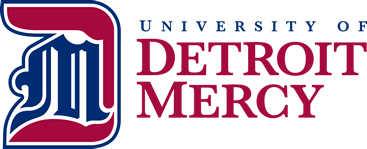
Keywords: Overview
Some form of a keyword search is the way most of us look for scholarly articles in database. It is a great approach! Make sure you are familiar with these librarian strategies to get the most out of your searches.
Figuring out the best keywords for your research topic/question is a process. You will start with one or a few words. Then you will adjust them as you start finding sources that describe the topic using other words.You can shift, adapt, and expand your search. Your words bridge between known topics and the unknowns of your research question. Sometimes one specific word will be enough. Sometimes you will need several different words to describe a concept AND you will need to connect that concept to another concept.
Boolean Connectors
| Boolean Connector | Purpose |
|---|---|
 |
ANDConnects different concepts (keywords). Narrows down the number of results. |
 |
ORConnects synonyms. Expands the number of results. |
 |
NOTExcludes a concept. Use with extreme caution (even librarians don't use this one much). |
Connect Keywords Using Boolean: Examples
It expands the number of results on the topic.
| Examples Topics of Interest | Search terms connected by OR |
|---|---|
| Glaucoma | Glaucoma OR Ocular hypertension |
| Cataract | Cataract OR Cloudy lens OR Lens opacity |
| Myopia | Myopia OR nearsightedness |
It narrows down the number of results.
| Example Topics of Interest | Search terms connected by AND |
|---|---|
| Macular degeneration using treat and extend | Macular degeneration AND treat and extend |
| Macular degeneration using pro re nata | Macular degeneration AND pro re nata |
Use with extreme caution.
| Example Topic of Interest | Search terms connected by NOT |
|---|---|
| Non-cosmetic contact lens | Contact lens NOT colored |
| Non-surgical myopia | Myopia NOT LASIK |
...uses the asterisk (*) to end a word at its core, allowing you to retrieve many more documents containing variations of the search term. Example: educat* will find educate, educates, education, educators, educating and more.
...is when you put quotations marks around two or more words, so that the database looks for those words in that exact order. Examples: "higher education," "public health" and "pharmaceutical industry."
...uses the database's own terms to describe what each article is about. Searching using controlled vocabularies is a great way to get at everything on a topic in a database.
Once you know you have a good article, there are a lot of useful parts to it - far beyond the content.
| Useful Part | Explanation |
|---|---|
| Keywords | Check the author-generated keywords, the database subject headings, the title, abstract and introduction for words that may be great additional/alternative search terms. You don't have to know everything about a topic before you start searching. Let what you find introduce you to the language of the field. |
| Author(s) | If they have written one article on this topic, they may have written more. Click on the authors' names to find what else they have in the database. Or use their names (individually) as a search term elsewhere. |
| Journal | They may have published other articles on your topic. Sometimes a special issue will focus on a single topic. Consider browsing or searching within a specific publication. Oftentimes you'll end up searching in the journal's website. |
| Instruments | Authors might have already created and validated an instrument (survey, tests, and measures). Consider if you can use/adapt it for your own work. Check for details in the methods section, an original citation in the reference, and/or a copy in the appendix. |
| References | Experts on this topic have gathered and evaluated these sources. Check them for potential sources for your own work. |
Check for useful tools in the database or search engine:
The PICO framework helps you think about what you want to know. It breaks your question into four parts:
Use those parts to structure your question. For instance, you could ask "In <Population>, what is the effect of <Intervention> compared to <Comparison> on <Outcome>. Example: In older adults with macular degeneration, what is the effect of a treat and extend regimen compared to a pro re nata regimen on progression stabilization?
You can use AND to combine those parts in your search. Usually, you will only need to include two or three parts in your actual search.
Example Search:
Macular degeneration AND treat and extend AND pro re nata AND stabilizing progression
Some people also add one or more additional parts:
T: Time. (What is the duration of the study?)
T: Type of Question. (Do you want to know about therapy, diagnosis, etiology, or something else?)
S: Setting. (Where does the intervention take place?)
S: Study Design. (What kind of study would help you answer this question?)
PICO is a common framework. Other frameworks, such as SPICE or PEO will be more appropriate for some topics.
Fielded Searching
Fielded searching is a technique where you search for a specific term within a designated data field in the database, such as the title field or abstract field. This technique will narrow your results and is used when you have retrieved too many hits.
Search String
Using a search string is helpful when searching in certain databases such as Scopus and Google Scholar. It allows you enter your terms along with the appropriate Boolean operators to find the most relevant articles.
Example of a search string for finding articles regarding macular degeneration and comparing a treat to extend regimen with a pro re nata regimen:
("macular degeneration" OR "retinal degeneration" OR "age related macular degeneration") AND "treat and extend" AND ("pro re nata" OR "as needed")
Note the use of parentheses to enclose your OR'ed terms and the use of "quotes" around phrases (multiple words that go together).